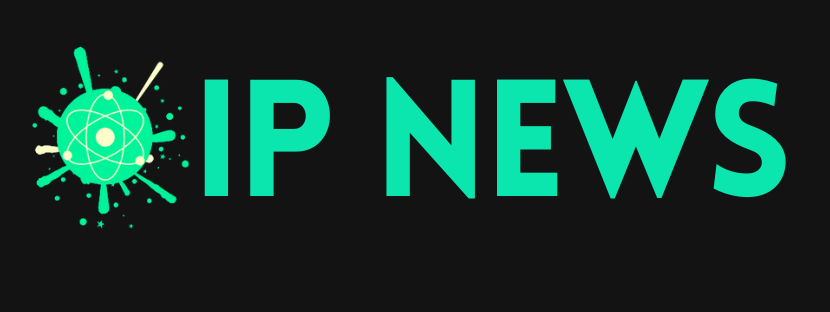Strategic Workforce Planning with AI: What HR Tech Consultants Need to Know
Strategic workforce planning is no longer just an HR function—it’s a business imperative. Companies are dealing with a whirlwind of...

Strategic workforce planning is no longer just an HR function—it’s a business imperative. Companies are dealing with a whirlwind of change: rapid digital transformation, evolving workforce expectations, increasing regulation, and mounting pressure to deliver faster outcomes. Amid all this, the need for forward-looking, data-driven workforce strategies has never been more urgent. Enter artificial intelligence—a game-changing enabler that’s helping HR leaders and consultants forecast, plan, and adapt to talent needs with unprecedented precision.
This new era of workforce planning requires HR technology consultants to bring more than just process knowledge or software expertise. It demands a deep understanding of AI capabilities, strong analytical thinking, and the ability to translate insights into strategic action. Let’s explore how AI is reshaping workforce planning and what HR consultants must do to help organizations navigate this transformation.
Why Workforce Planning Needs an Upgrade
Workforce planning has traditionally relied on static org charts, basic headcount forecasting, and siloed spreadsheets. It’s a process often driven by annual budgeting cycles and reactive responses to business shifts. While these methods may have worked in a slower, more predictable world, they’re no longer sufficient.
Today’s workforce planning must account for fast-changing market demands, emerging technologies, global talent competition, and shifting employee expectations. Companies need real-time insights into who they have, who they need, and how gaps can be bridged—whether through upskilling, hiring, automation, or redeployment. This complexity makes manual planning unsustainable and ripe for AI-powered disruption.
What Makes AI a Natural Fit for Workforce Planning
AI thrives on pattern recognition, prediction, and optimization—all essential elements of workforce planning. Instead of waiting for quarterly or annual updates, AI models can process real-time internal and external data to dynamically adjust plans. Here’s how it makes a difference:
AI analyzes workforce trends, turnover rates, skill availability, performance data, and business growth metrics to project future talent needs. It identifies not just what roles are needed, but what skills will become more or less relevant over time. AI-driven planning also factors in external data—industry benchmarks, market shifts, economic forecasts—making plans far more holistic.
Another major advantage is scenario simulation. AI can model multiple “what-if” situations, helping leaders explore the impact of changes such as a sudden product pivot, regulatory shift, or economic downturn. This enables smarter decision-making and reduces the risk of costly workforce mismatches.
Core Components of AI-Enabled Workforce Planning
To use AI effectively in strategic workforce planning, HR consultants need to guide clients in building out key components:
1. Data Integration and Preparation
Effective AI models require clean, comprehensive, and connected data. This includes HRIS data, performance reviews, compensation records, learning history, and even unstructured data like survey responses. Consultants must help organizations break down silos and build centralized data frameworks. Without high-quality data, AI models can’t deliver valuable insights.
2. Skills Intelligence Mapping
The future of workforce planning is skills-based. AI tools can analyze job descriptions, learning content, and employee profiles to create a skills taxonomy. This helps businesses understand their current capabilities and plan for future skill demands. HR consultants can assist in validating and refining these models to ensure alignment with business strategy.
3. Predictive Modeling
AI-based workforce planning tools can project attrition risk, internal mobility patterns, and readiness for new roles. These insights enable HR leaders to take proactive steps—like initiating reskilling programs, planning succession, or adjusting hiring strategies. Consultants play a key role in interpreting these models and turning forecasts into practical actions.
4. Workforce Segmentation
AI allows planners to segment the workforce not just by role or department, but by factors like potential, performance, engagement, and risk level. This deeper segmentation supports targeted strategies—for example, prioritizing retention efforts for high-performing but at-risk employees. Consultants help define these segments and identify the most relevant strategies for each group.
5. Dynamic Scenario Planning
One of AI’s most powerful capabilities is simulating the impact of strategic decisions. What happens if automation increases by 20%? What if a major client pulls out? AI can model these scenarios using multiple variables. Consultants guide leaders in exploring these scenarios and preparing contingency plans, ensuring agility in uncertain conditions.
6. Visual Dashboards and Insights Delivery
AI-driven insights are only valuable if decision-makers understand and trust them. Visual dashboards powered by AI can present complex data in simple, interactive formats. Consultants must ensure the output is not only technically accurate but also business-friendly, helping HR and business leaders take timely, informed actions.
Where AI Delivers Tangible Value in Workforce Planning
Let’s break down some areas where AI is already having a visible impact and where HR consultants can deliver immediate value:
1. Proactive Hiring and Capacity Planning
AI can identify roles that will likely become understaffed in the next 6–12 months. This allows TA teams to start pipeline building early. Consultants help set thresholds and triggers for these forecasts, ensuring alignment with recruiting budgets and timelines.
2. Reskilling and Talent Mobility
Rather than defaulting to external hiring, AI can suggest internal candidates for open roles based on transferable skills. Consultants help clients build career pathways and development plans that support internal mobility, reducing time-to-fill and improving employee engagement.
3. Attrition and Retention Strategy
Using behavioral, demographic, and performance data, AI models can flag employees who may be at risk of leaving. Consultants work with HR teams to craft personalized retention strategies and assess the financial impact of turnover before it happens.
4. Diversity and Inclusion Metrics
AI can analyze hiring and promotion data to identify gaps in representation and progression. HR consultants guide clients in using these insights to design D&I initiatives that are data-backed, targeted, and measurable.
5. Post-Merger Workforce Integration
In M&A scenarios, AI helps evaluate skill overlap, identify redundancies, and map new org structures. Consultants play a crucial role in managing change and facilitating smoother transitions using these insights.
The Consultant’s Playbook: How to Guide AI-Driven Planning
To successfully support organizations in AI-enabled workforce planning, HR consultants need to adopt a strategic approach. Here’s what that might look like:
- Start with a business objective, not a tool. Align AI initiatives with growth goals, cost reduction, innovation, or agility.
- Evaluate data readiness. Help clients assess their current data landscape and build roadmaps for integration and cleansing.
- Educate stakeholders. Bridge the gap between HR, IT, and leadership to ensure buy-in and cross-functional alignment.
- Pilot before scaling. Launch AI planning tools in one business unit or region, evaluate outcomes, and refine the model before expanding.
- Establish governance. Define data ownership, ethical guidelines, and ongoing audit mechanisms to ensure responsible AI use.
Challenges to Watch Out For
While the promise is real, AI-driven workforce planning is not without its hurdles:
Data quality issues can limit model accuracy. Consultants must stress the importance of reliable, updated data inputs.
Bias in algorithms can perpetuate inequality. Models must be trained with diverse datasets and audited regularly.
Change resistance from HR teams unfamiliar with AI tools can slow adoption. Consultants need to pair tech implementation with strong change management.
Overreliance on AI outputs without human validation can lead to poor decisions. AI should support—not replace—strategic thinking.
The Future of Workforce Planning
We’re moving toward a world where workforce planning becomes a living, breathing activity. Rather than static reports, organizations will operate with real-time dashboards. Instead of backward-looking metrics, they’ll lean on predictive insights. Planning cycles will shorten, decision-making will speed up, and HR will become a true strategic partner in business success.
This future is not a distant dream—it’s rapidly becoming reality, especially for organizations that embrace AI today. The role of the HR consultant in this shift is pivotal. They are the translators between technology and people, between potential and impact.
In conclusion, HR technology consulting is no longer about just implementing HRIS or aligning job codes. It’s about building intelligent, agile systems that can see around corners. By integrating AI into strategic workforce planning, consultants are helping businesses not just react to change, but prepare for it—confidently, proactively, and intelligently.






